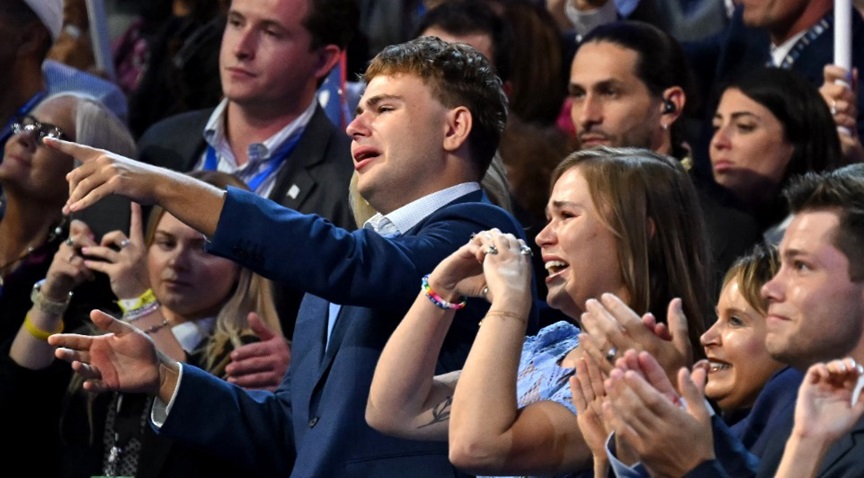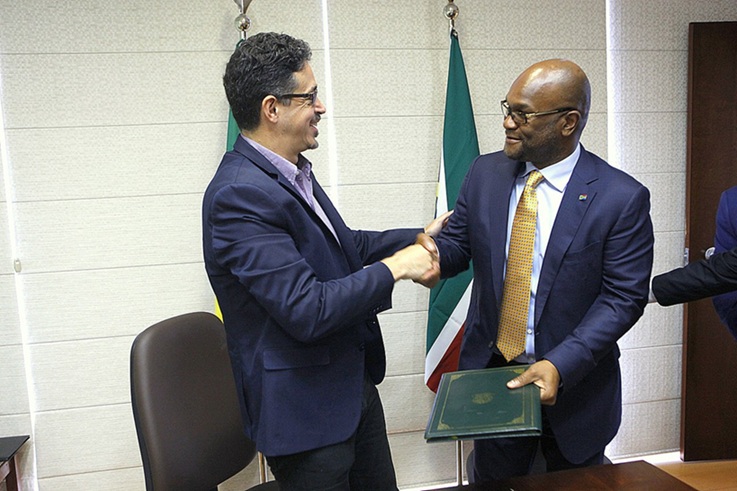In a night filled with political speeches and strategic posturing, it was a teenager’s unfiltered emotion that stole the spotlight. Gus Walz, the 17-year-old son of Minnesota Governor Tim Walz, gave his father an unforgettable standing ovation at the Democratic National Convention, his eyes brimming with tears as he proudly declared, “That’s my dad!”
While Tim Walz was there to accept his party’s nomination for vice president, it was Gus’s outpouring of love and pride that captured the hearts of viewers nationwide. The candid moment sparked a conversation not just about the Walz family’s bond but also about Gus’s journey—a journey shaped by a unique perspective on the world.
Growing up, Gus was more inclined to spend time alone, engrossed in video games, rather than being the life of the party. As a teenager, he was diagnosed with nonverbal learning disorder, attention-deficit/hyperactivity disorder (ADHD), and anxiety—a trio of challenges that might have seemed daunting to many. But for Gus, and his parents, these conditions have become what they call his “secret power.”
Tim and Gwen Walz, in a candid statement to People magazine, shared how Gus’s differences have actually highlighted his brilliance. “It took time, but what became so immediately clear to us was that Gus’ condition is not a setback—it’s his secret power,” they wrote. They described him as “brilliant, hyper-aware of details that many of us pass by, and above all else, he’s an excellent son and brother to his sibling.”
Nonverbal learning disability, despite its misleading name, doesn’t affect a person’s ability to speak. Instead, it challenges their ability to process visual and spatial information or nonverbal social cues. This can make tasks like geometry or understanding social nuances difficult, though these children often excel in verbal tasks and can have above-average intelligence. Gus’s condition is a testament to how the mind’s unique wiring can create a blend of strengths and weaknesses, rather than simply deficits.
Experts like Rick Ostrander, a recently retired child psychologist from Johns Hopkins University, and Prudence Fisher, a clinical psychiatric social work professor at Columbia University, are advocating for a deeper understanding and redefinition of this condition. Fisher even suggests renaming it “developmental visual-spatial disorder” to better capture its essence.
Children like Gus may struggle with seemingly simple tasks, such as visualizing math problems or picking up on social cues, which can lead to frustration and anxiety. Yet, with the right support and understanding, these challenges can be transformed into unique strengths.
ADHD, another part of Gus’s life, is a common condition that affects about 1 in 9 children in the United States. It’s a complex disorder with different subtypes—some children struggle primarily with focus, others with hyperactivity, and some with both. Treatment often includes a mix of behavioral strategies and, sometimes, medication, tailored to help children like Gus navigate their world more effectively.
But Gus’s story isn’t just about his diagnoses. It’s about how his family sees his differences as strengths. “We don’t see them as being pathological, as much as they are differences in how people are wired,” Ostrander said, echoing the Walz family’s perspective.
Maria Town, president of the American Association of People With Disabilities, also weighed in, expressing hope that Gus’s moment of pride wouldn’t be overshadowed by his diagnoses. “When Gus showed huge displays of emotion … for his father, he wasn’t shushed or told to be smaller. Instead, he was greeted with enormous hugs from a father who is obviously proud of his son, as a parent of any child should be,” Town wrote.
In a world where differences are often viewed through a lens of limitation, Gus Walz’s heartfelt display at the DNC is a reminder of the power of love, acceptance, and embracing what makes each of us unique. His story isn’t just one of overcoming obstacles—it’s about celebrating the extraordinary within the ordinary.
(Source: People | Associated Press | USA Today)







